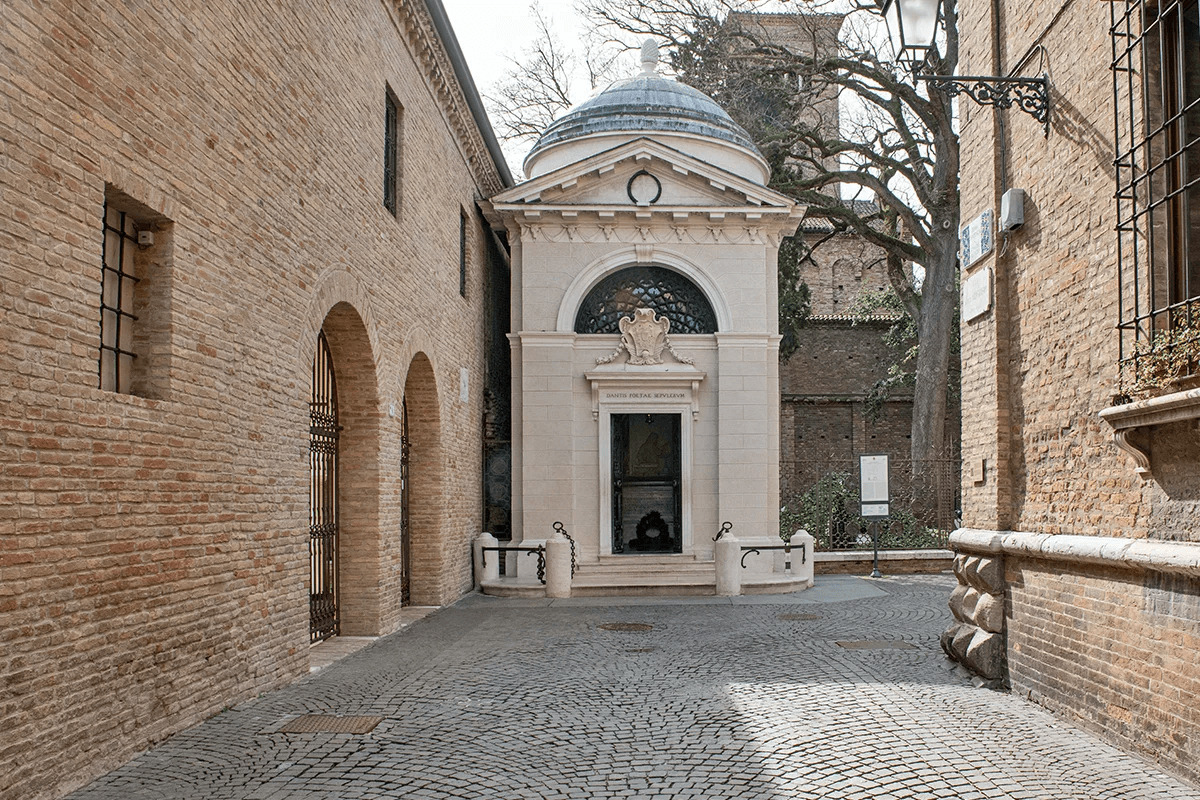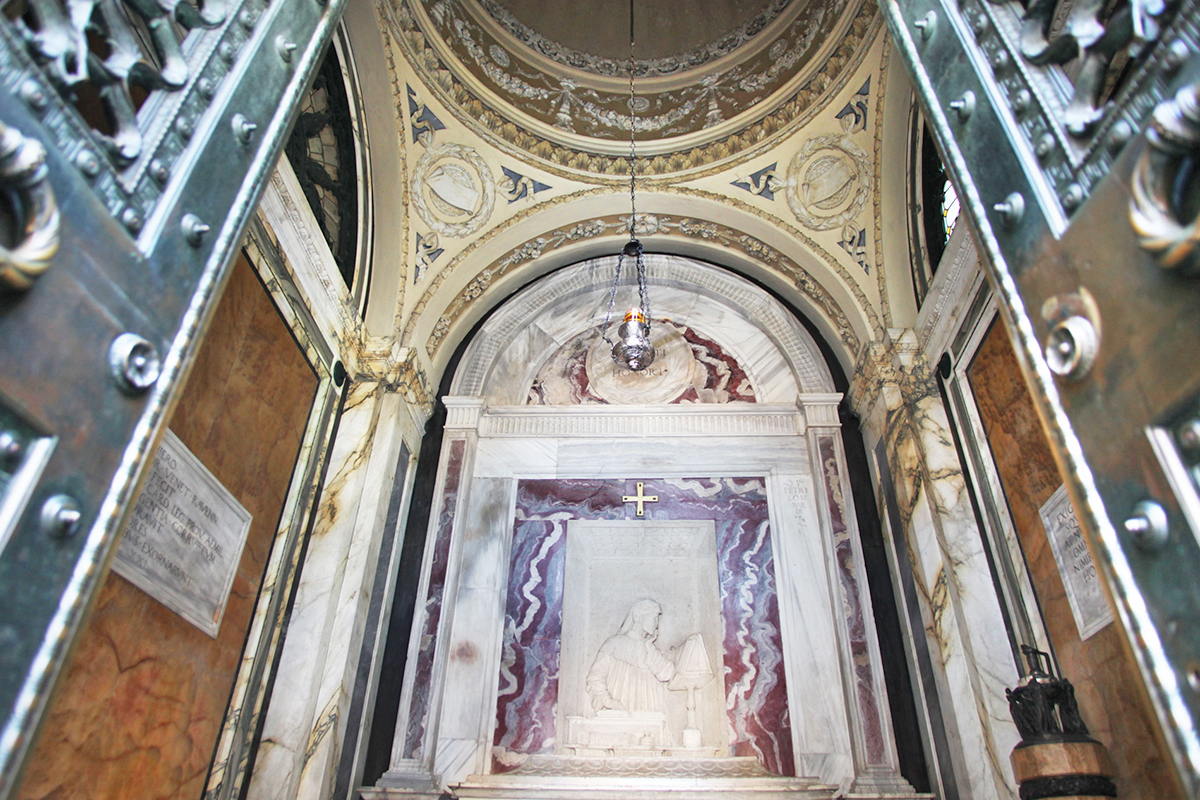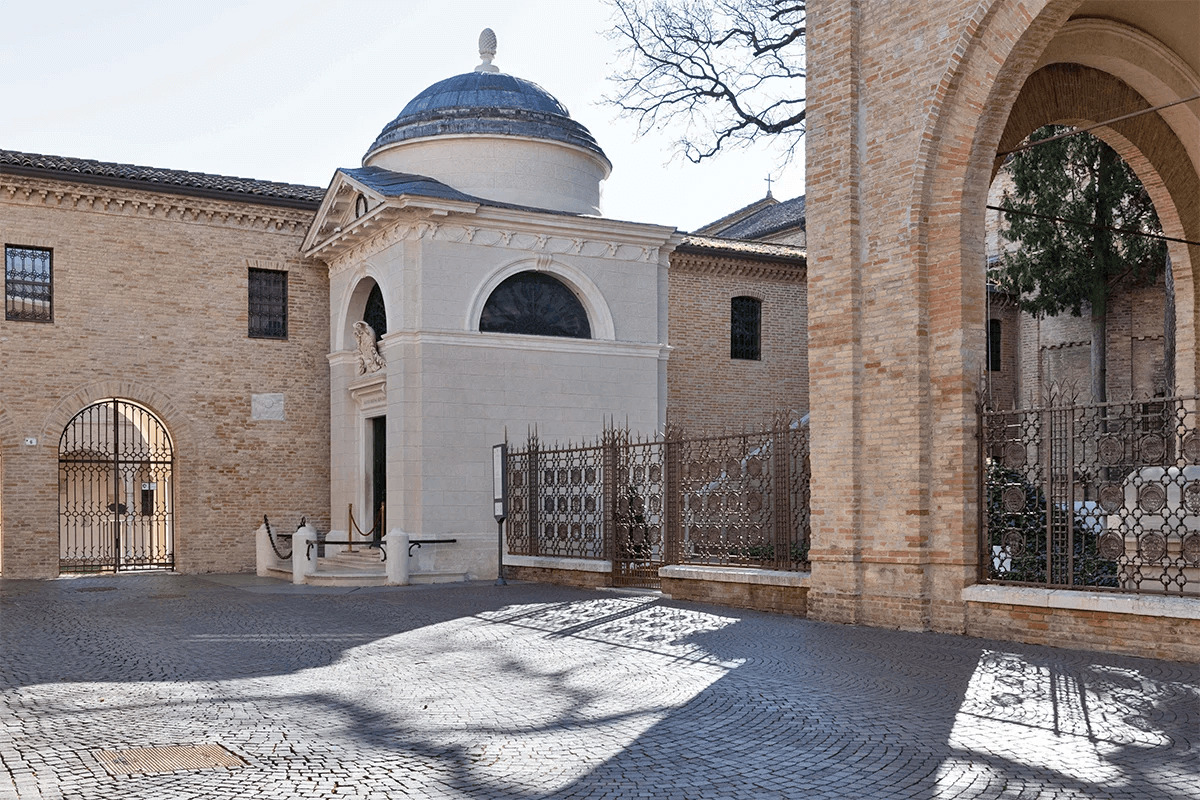In the heart of Ravenna lies a little corner of peace and respect dedicated to the memory of DANTE ALIGHIERI, the father of the Italian language.
In this area, in the shadow of a majestic oak planted by Giosuè Carducci at the beginning of the 20th century, is his TOMB, the Supreme Poet’s resting place.
Built between 1780 and 1781 on the project of architect Camillo Morigia, the so-called “sugar bowl”, as the Ravenna people have friendly nicknamed it, stands out at the end of Via Dante Alighieri and is the key point of interest of the Zone of Silence.
On the architrave of the entrance is a marble plaque reciting “Dantis Poetae Sepulcrum”, which makes it easy to recognize.
The mistery of Dante’s spoils
When Dante died, in 1321, his tomb was supposedly a simple sarcophagus just outside the Church of San Francesco. It was Guido Novello da Polenta, lord of Ravenna, who asked for the construction of the chapel to pay homage to him one last time.
In 1483, Bernardo Bembo, who ruled the city on account of the Republic of Venice, decided to restore the sarcophagus and commissioned the sculptor Pietro Lombardo a marble bass relief portraying Dante’s face, visible today inside the Tomb.
The Supreme Poet’s spoils have been a bone of contention between Ravenna and Florence for a long time, so much so that between the 16th and the 18th century, Dante’s remains went missing for no less than two hundred years! It came out that the Franciscan friars hid them, so that Florence couldn’t get them.
The current mausoleum was built between 1780 and 1782. It was ordered by Cardinal Luigi Valenti Gonzaga (1725 – 1808) and designed by the Ravenna architect Camillo Morigia (1743-1795), who created a little Neoclassical temple made of simple lines and sombre decorations.
On that occasion, the spoils were recovered and placed in their original urn. They didn’t stay there for long, though. In 1810, Napoleon ordered the confiscation of monastic property. Therefore, the friars were forced to leave, but first they made sure to hide again the chest with the spoils.
On May 25th 1865, during some maintenance works at the monastery beside the tomb, a bricklayer accidentally found a wooden chest in a wall of the Quadrarco di Braccioforte. Luckily, a young student, Anastasio Matteuggi, saved the box from destruction.
The chest had a script saying “Dantis ossa a me Fra Antonio Sancti hic posita anno 1677 die 18 octobris”, which means “These bones of Dante placed by me on the date of 18 October 1677”.
On that occasion, the remains were reassembled and put on display in a crystal urn for a few months. Then, they were entombed again inside the little temple we all know today.
Since then, besides the transfers occurred during the Second World War in order to avoid destruction, the spoils haven’t been moved anymore. This story full of adventure that has nourished the mystery of Dante’s remains for centuries has come to an end at long last.
Dante’s Tomb
The inside of the tomb, which has been covered with marble on the occasion of the 1921 centenary, preserves the sepulchre with Dante’s spoils and the bass relief by sculptor Pietro Lombardo.
On the sepulchre’s top is engraved the Latin epitaph written by poet Bernardo Canaccio in 1327:
“Iura monarchie superos Phlaegetonta lacusque / lustrando cecini fata volverunt quousque sed quia pars cessit melioribus hospita castris / actoremque suum petiit felicior astris hic claudor Dantes patriis extorris ab oris / quem genuit parvi Florentia mater amoris”
Which means: “The rights of monarchy, the skies and waters of Flegetont,
Visiting I sang until my mortal destinies arrived.
Since my soul went hosted in better places,
and even more fortunate reached among the stars his Creator, here I am enclosed,
Me (Dante), exiled from the earthly land, which generated Florence, mother of little love”.
At the bottom of the sarcophagus lies a bronze and silver wreath donated by the victorious army of the First World War, while on the right is the ampoule created by sculptor of Trieste Giovanni Mayer and donated by the Istrian-Dalmatian cities in 1908.
At the centre of the little room, a votive lamp burns with the oil donated by Tuscany. Every year, in fact, on the second Sunday of September, the Municipality of Florence sends a delegation and offers the oil to commemorate its fellow citizen.
Every day, the memory of Dante is alive thanks to L’ora che volge il disìo – perpetual reading of the Divine Comedy.
Every day and forever, in front of Dante’s Tomb, a canto from the universal work of Dante is read aloud – a way to celebrate the poet and give everyone the possibility to try their hand in the reading of one of the most illustrious works of the Italian culture.









